What is the correct spelling of the common name for Lagerstroemia indica? What do the expert horticulturists say about the use of the words crepe, crape and myrtle for this ornamental tree?
Is crepe myrtle two words? What is the correct spelling of the common name for Lagerstroemia indica?
Although Southern Living spells it crepe myrtle and the former Crape Myrtle Society of America spelled it two words, the majority of the crapemyrtle experts in the world including the late Dr. Donald Egolf (father of the National Arboretum hybrid crapemyrtles and author of the Lagerstroemia handbook); current number one crapemyrtle breeder and author Dr. Carl Whitcomb; Crapemyrtle- A Gower’s Thoughts author and nurseryman Mark Byers; and breeder, author, and horticulturist extraordinaire Dr. Mike Dirr, all spell it one word, since it isn’t a true myrtle (Myrtus) nor is it related to one. Same thought process on baldcypress, which isn’t a true cypress. I too spell it crapemyrtle as does Texas Gardener magazine.
-This is pulled from a 2013 comment on the Bulb Hunter Blog by our friend and expert horticulturist, Greg Grant, who has his own great blog here.
In short, if we had to answer to the question “Is crepe myrtle two words?” we would say no, and it should probably be one word and spelled “crapemyrtle.” Before an angry mob approaches, I would in the same breadth agree with the comment of one of our readers, Mary Beth: “we might just agree to disagree on the spelling, while agreeing on the beauty of this small tree and how much it adds to landscapes.”
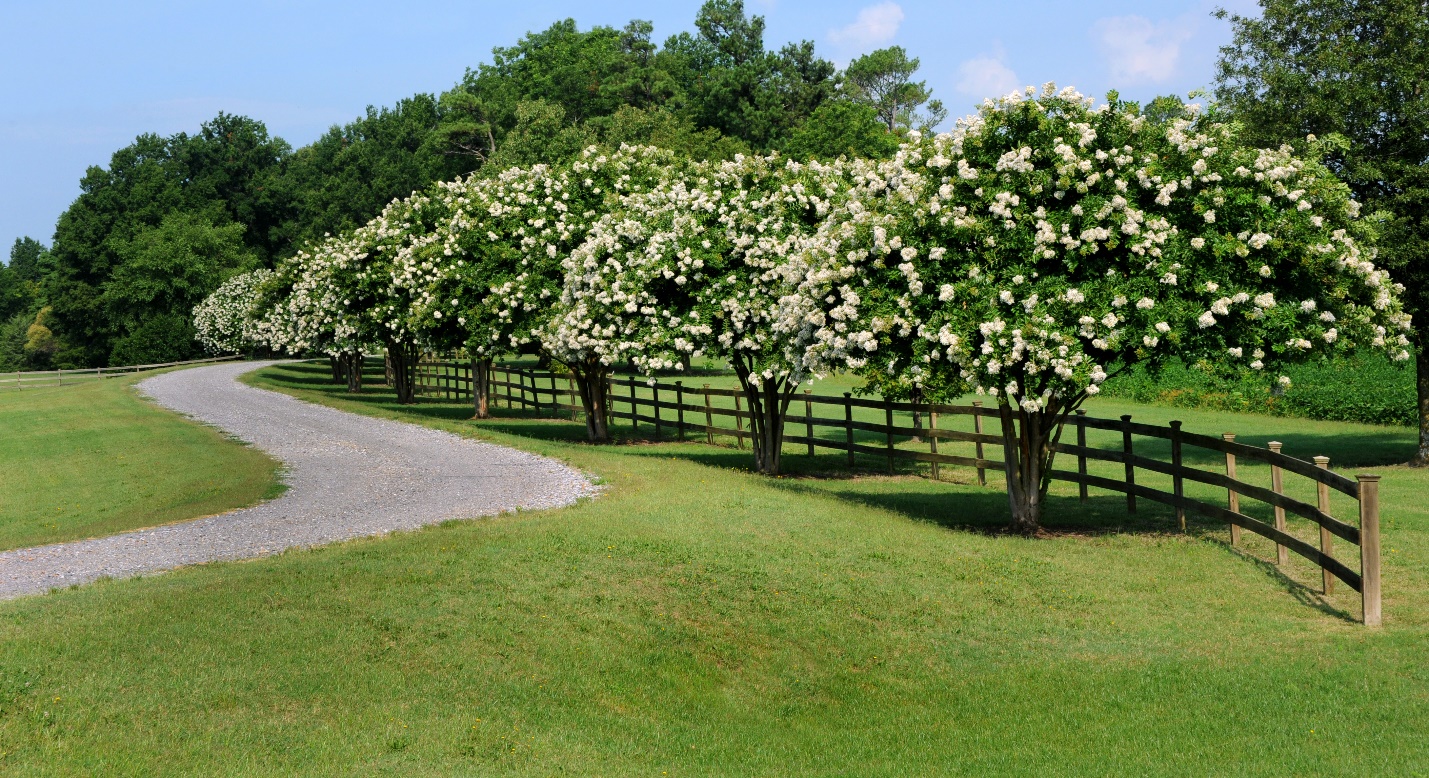
Outline of other topics in this post:
- How do crapemyrtles work together with flower bulbs?
- What are some common spellings of crapemyrtle? Two word versions of crape myrtle and crepe myrtle.
- How do you prune and care for a crapemyrtle?
- What are some of our favorite crapemyrtle selections?
- What are some of the most popular crapemyrtle selections?
How do crapemyrtles work together with flower bulbs?
Crape myrtles are deciduous trees, meaning they lose their leaves in the wintertime. Many of our flower bulbs, such as the red spider lilies, schoolhouse lilies, daffodils, and more grow during the winter. In other words, when many of our flower bulbs need the sun as they grow in the winter, the crapemyrtle trees allow sun to come through their leafless branches and hit the flower bulb foliage.
When the bulbs are “dormant” in the ground during the summer, the crapemyrtles are growing and blooming. In summer, the crapemyrtles provides us shade, structure, and colorful blooms. In the winter and early spring, bulbs planted below the crapemyrtle trees provide bold colors and additional winter interest in the garden. Crapemyrtle trees and flower bulbs are a match made in heaven.
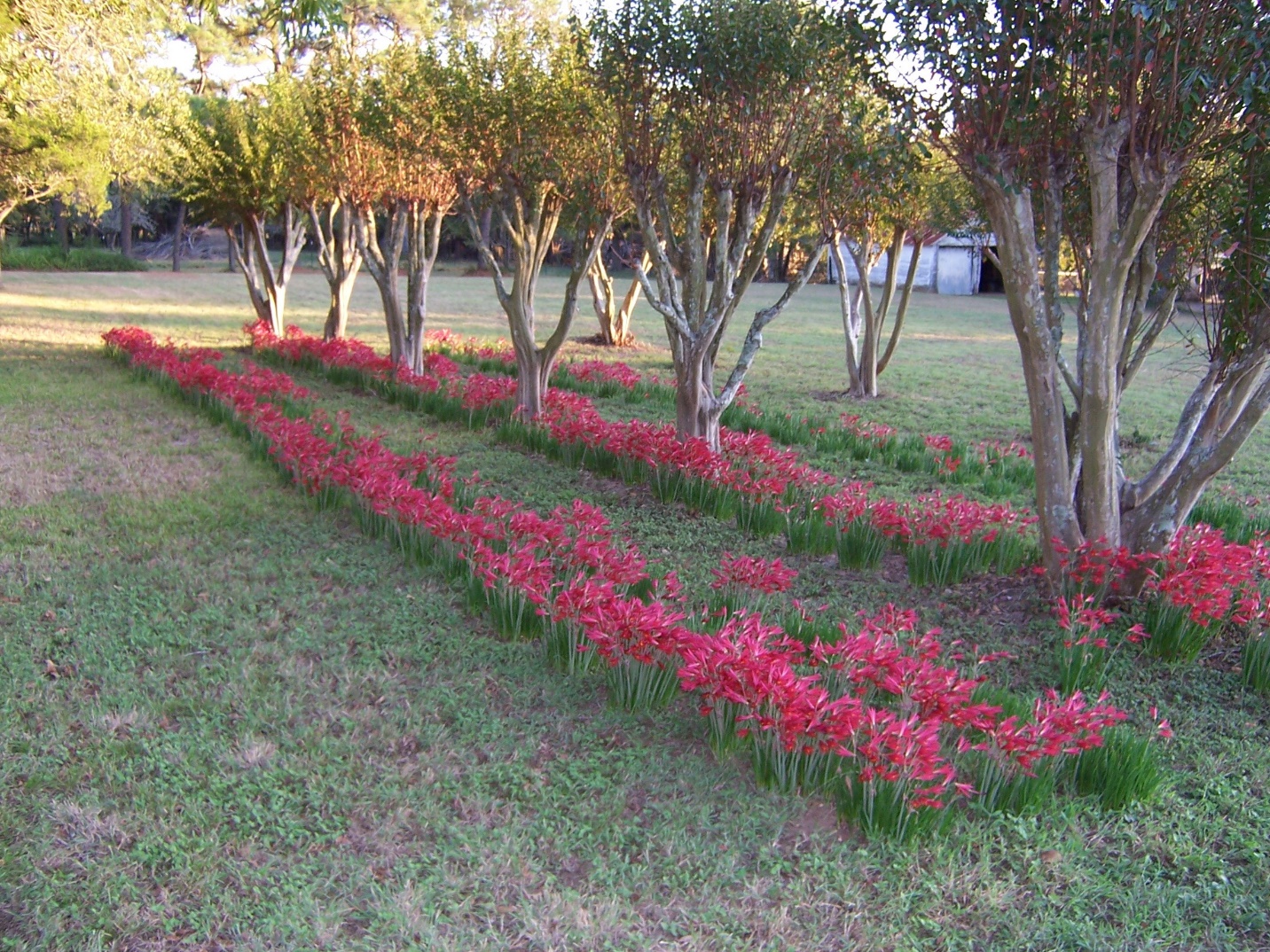
This is a picture containing the fall blooming schoolhouse lilies (Rhodophiala bifida) also known as oxblood lilies growing with crapemyrtles in Central Texas. They grow their foliage up in the winter while the crapemyrtles have no leaves. That allows them to grow very healthy, and since these bloom on naked stalks in the fall BEFORE the winter foliage arrives, they actually bloom in semi shaded conditions while the trees still have their leaves on them.
What are some common spellings of crapemyrtle? Is crepe myrtle two words continued…
As Greg mentioned in his answer above, a very common spelling of the tree is “crepe myrtle” and that is used by Southern Living Magazine. Here is one of the most searched for articles from Southern Living on the tree: https://www.southernliving.com/garden/crepe-myrtle-trees
This ties into another blog comment we had from a reader with this question:
“Or is it “crepe” myrtle??? But, Chris, Aggie Horticulture spells it “crape myrtle”. We might consider that definitive for Texans, or we might just agree to disagree on the spelling, while agreeing on the beauty of this small tree and how much it adds to landscapes at this time of year.” -Mary Beth G. on July 19, 2013
Another common spelling is the two-word combination of “crape myrtle.” In this situation, the first “e” in “crepe” is switched to an “a”. In fact, the autocorrect on Microsoft word is no help here as well, as it constantly tries to switch crapemyrtle into two separate words until you add it to get dictionary!
Maybe this is the right time to simply list the scientific name Lagerstroemia indica and follow the advice of Mary Beth: “we might just agree to disagree on the spelling, while agreeing on the beauty of this small tree and how much it adds to landscapes.” Well said Mary Beth, and may this attitude towards gardening continue to unite us in the enjoyment of the beauty all around us!
How do you care for a crapemyrtle?
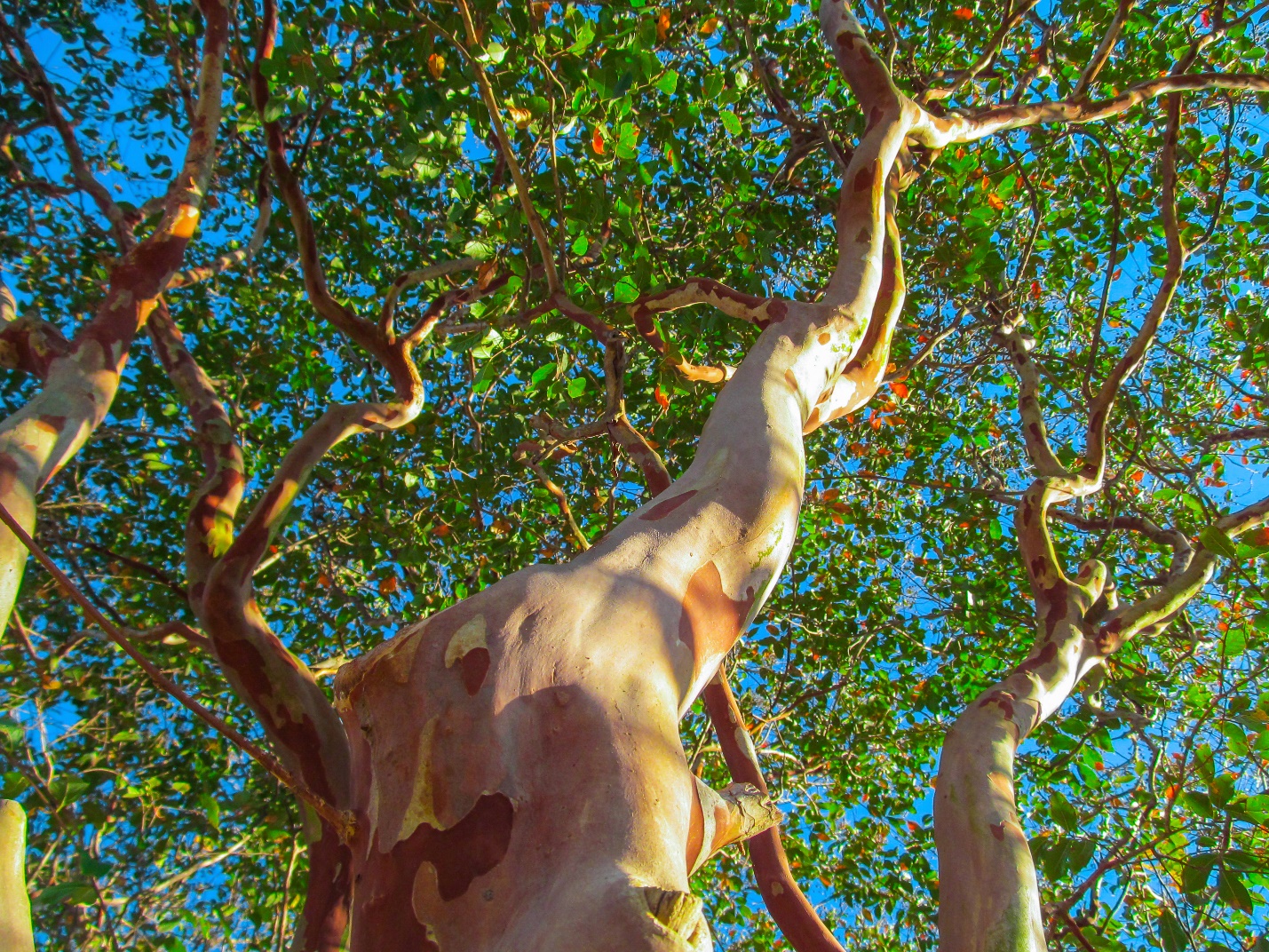
Trim the crapemyrtle tree up and enjoy the bark! It is a stunning addition to the garden, and the blooms are simply a bonus. Most maintenance with a crapemyrtle tree generally involves pruning competing branching and trimming off the suckers that form at the base of new trees. Many folks prefer to generally NOT prune the tops of crapemyrtle trees.
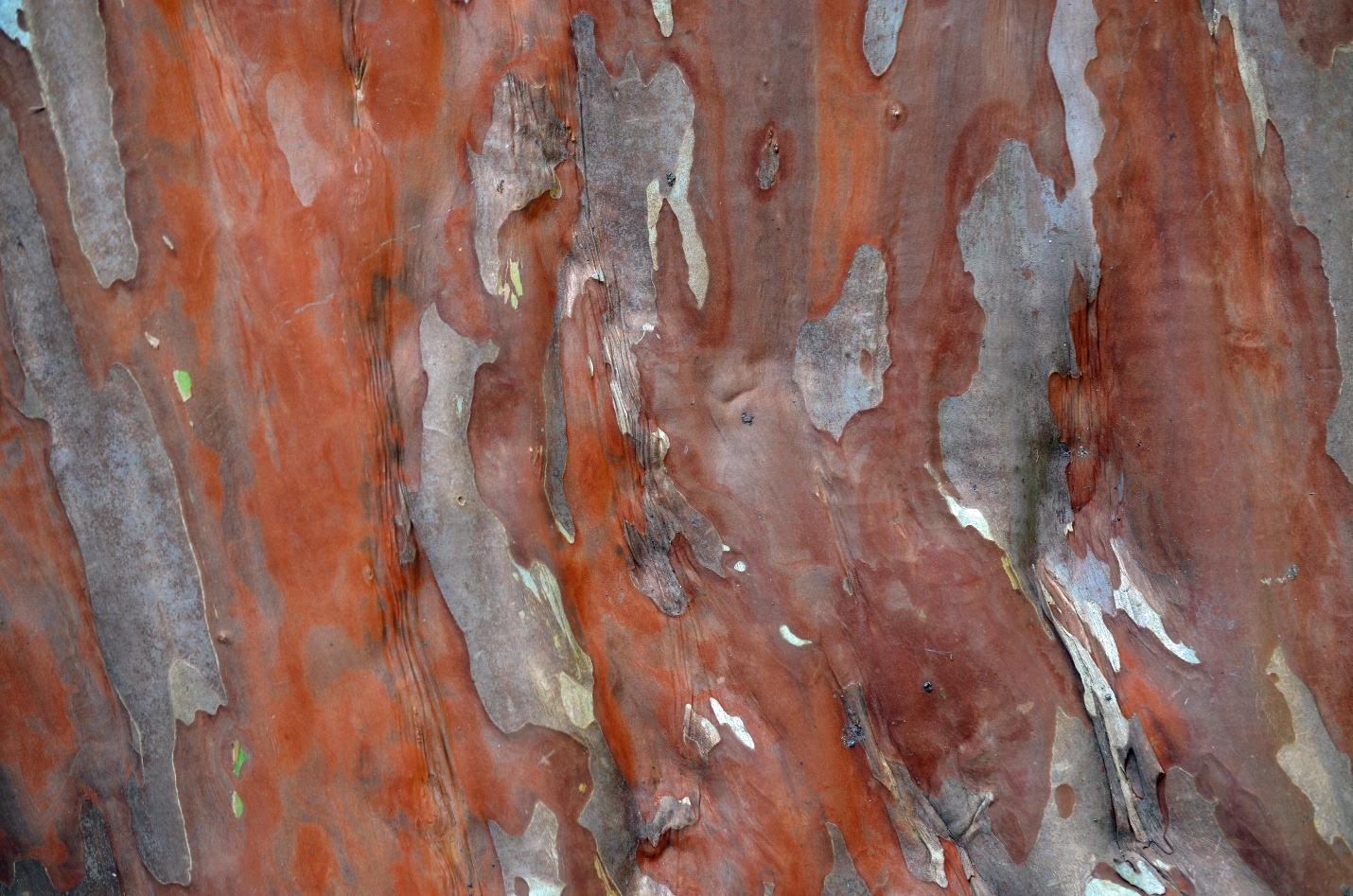
This is a hard lesson for many landscape maintenance crews as they are “looking” for things to do in the winter. A landscape maintenance crew with time on their hands love to simple give the trees a topping buzzcut! I’ve told our crew at the office 3 times to NOT cut the tops, but they instinctively still want to do it—one day when I am out of town or not paying attention, I have no doubt I will pull up to the warehouse and see the trees “topped off” some winter.
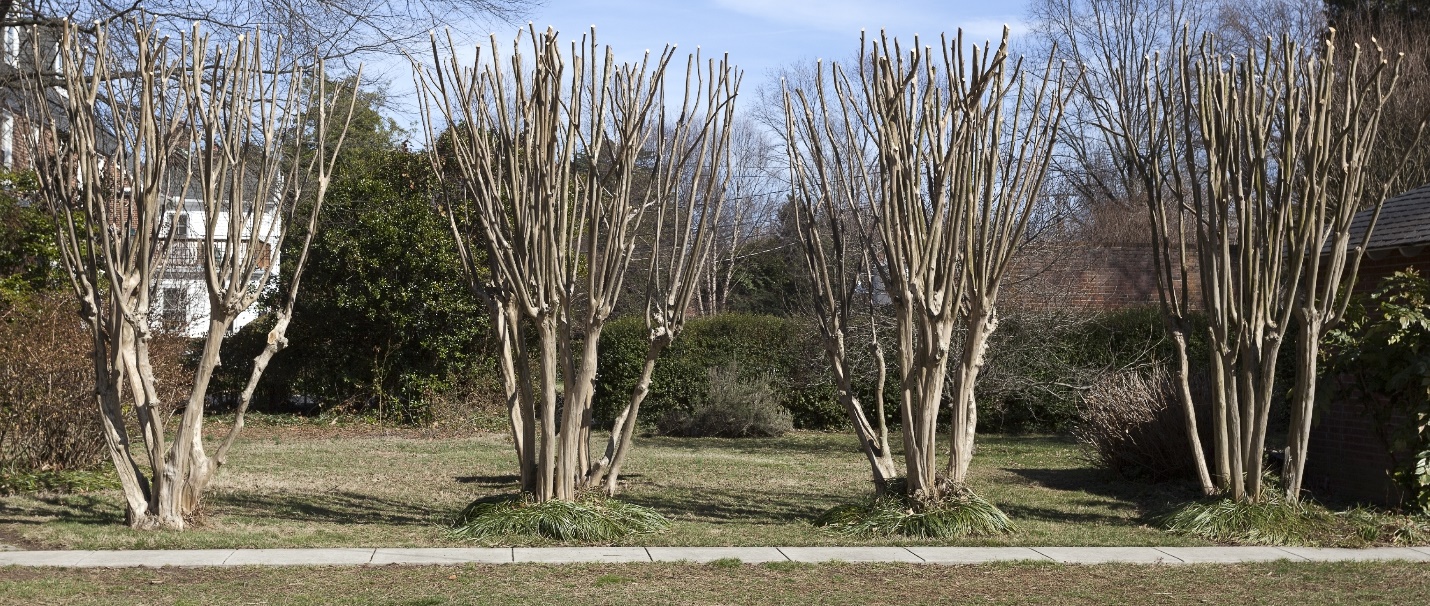
I’ll refer to this great article on crapemyrtle care by our previously mentioned friend, Greg Grant where he encourages us to STOP CRAPE MURDER!
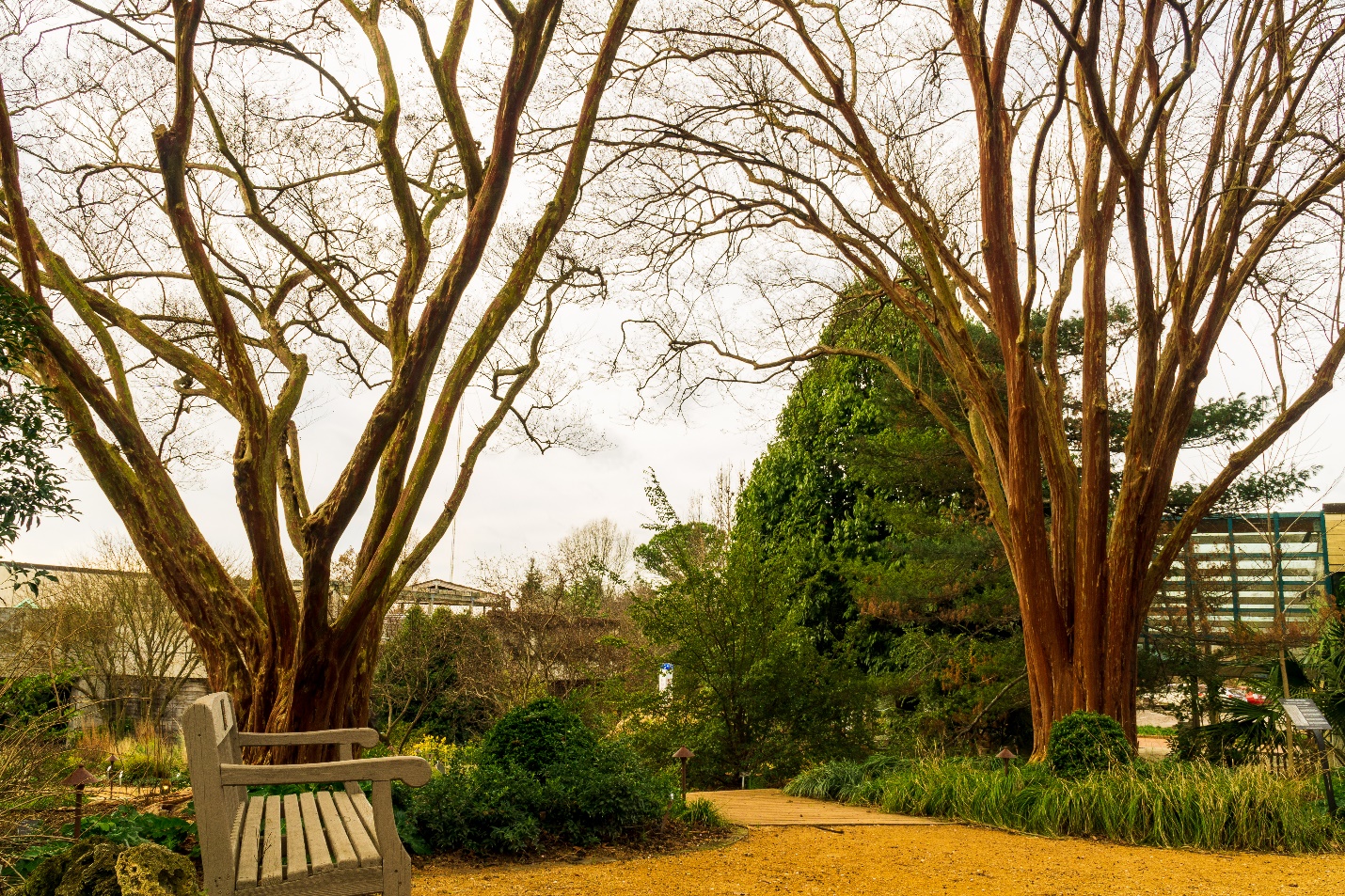
Some of our favorite crapemyrtle varieties:
- ‘Natchez’ crapemyrtle
- ‘Near East’ crapemyrtle
- Heirloom indica crapemyrtles
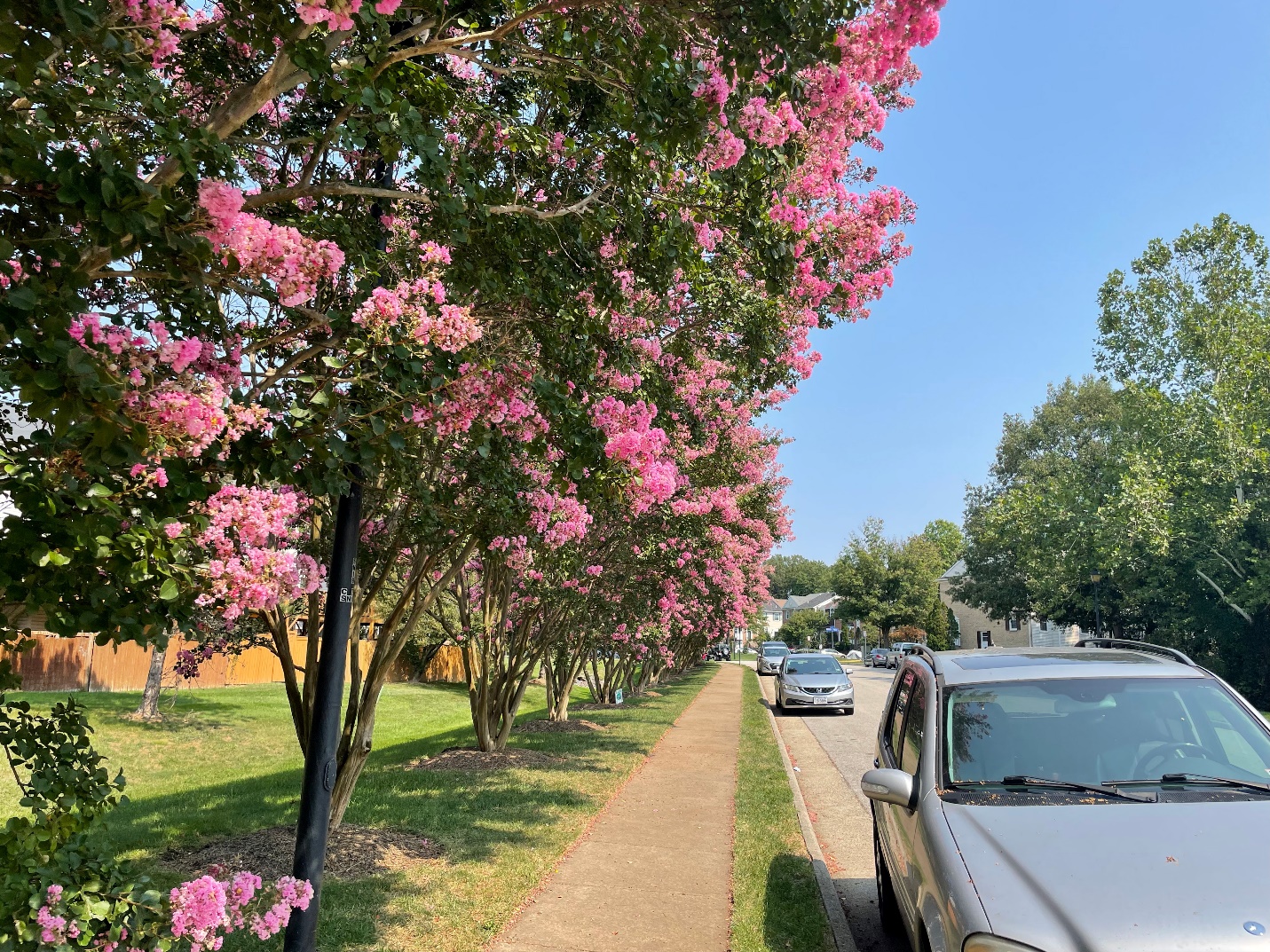
Some of the most popular crapemyrtle varieties:
- Delta Jazz
- Siren Red
- Rhapsody in Pink
- Black Diamond
- Pink Velour
We hope this short article helped understand crapemyrtle trees and we hope that you will combine them with flower bulb plantings and use them in your garden! Remember, we sell flower bulbs on http://www.southernbulbs.com
